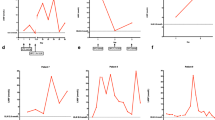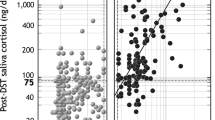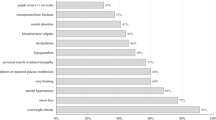Abstract
Late-night salivary cortisol (LNSC) is now considered the best approach to screen patients suspected of having endogenous hypercortisolism (Cushing’s syndrome). As the use of LNSC increases, new preanalytic and analytic issues have arisen. The routine immunoassay for salivary cortisol seems to have better diagnostic performance than liquid chromatograph/tandem mass spectrometry, although measurement of normal salivary cortisone concentrations with the latter technique is very useful in identifying samples contaminated with topical hydrocortisone. LNSC is very useful in screening for Cushing’s syndrome in women with increased corticosteroid-binding globulin resulting from estrogen therapy or pregnancy. Two LNSCs from each patient is recommended for routine screening, although one adequate saliva sample seems to perform well. The overnight dexamethasone suppression test remains superior to LNSC in the evaluation of potential subclinical hypercortisolism in patients with adrenal incidentalomas. Periodic assessment of LNSC is extremely useful in monitoring patients for recurrence of Cushing’s disease after pituitary surgery. With the large increase in the number LNSCs being ordered around the world, it is likely that more preanalytic and analytic issues will arise, which laboratorians and clinical chemists will need to resolve.
Similar content being viewed by others
Abbreviations
- LNSC:
-
Late-night salivary cortisol
- oDST:
-
Overnight dexamethasone suppression test
- UFC:
-
Urine free cortisol
- LC/MS-MS:
-
Liquid chromatography/tandem mass spectrometry
References
H. Raff, Utility of salivary cortisol measurements in Cushing’s syndrome and adrenal insufficiency. J Clin Endocrinol Metab 94, 3647–3655 (2009)
H. Raff, Cushing’s syndrome: diagnosis and surveillance using salivary cortisol. Pituitary 15, 64–70 (2012)
T. Carroll, H. Raff, J.W. Findling, Late-night salivary cortisol measurement in the diagnosis of Cushing’s syndrome. Nat Clin Pract Endocrinol Metab 4, 344–350 (2008)
H. Raff, The role of salivary cortisol determinations in the diagnosis of Cushing’s syndrome. Curr Opin Endocrinol Diabetes 11, 271–275 (2004)
H. Raff, Salivary cortisol: a useful measurement in the diagnosis of Cushing’s syndrome and the evaluation of the hypothalamic-pituitary adrenal axis. Endocrinologist 10, 9–17 (2000)
L.K. Nieman, B.M. Biller, J.W. Findling, J. Newell-Price, M.O. Savage, P.M. Stewart, V.M. Montori, The diagnosis of Cushing’s syndrome: an Endocrine Society Clinical Practice Guideline. J Clin Endocrinol Metab 93, 1526–1540 (2008)
A.J. Inder, G. Dimeski, A. Russell, Measurement of salivary cortisol in 2012—laboratory techniques and clinical indications. Clin Endocrinol 77, 645–651 (2012)
H. Raff, J.L. Raff, J.W. Findling, Late-night salivary cortisol as a screening test for Cushing’s syndrome. J Clin Endocrinol Metab 83, 2681–2686 (1998)
H. Raff, P.J. Homar, D.P. Skoner, A new enzyme immunoassay for salivary cortisol. Clin Chem 49, 203–204 (2003)
C.A. Carrasco, M. Garcıa, M. Goycoolea, J. Cerda, J. Bertherat, O. Padilla, Reproducibility and performance of one or two samples of salivary cortisol in the diagnosis of Cushing’s syndrome using an automated immunoassay system. Endocrine 41, 487–493 (2012)
T. Deutschbein, M. Broecker-Preuss, J. Flitsch, A. Jaeger, R. Althoff, W.K. Walz, K. Mann, S. Petersenn, Salivary cortisol as a diagnostic tool for Cushing’s syndrome and adrenal insufficiency: improved screening by an automatic immunoassay. Eur. J. Endocrinol. 166, 613–618 (2012)
Z.E. Belaya, A.V. Iljin, G.A. Melnichenkova, L.Y. Rozhinskaya, N.V. Dragunova, L.K. Dzeranova, S.A. Butrova, E.A. Troshina, I.I. Dedov, Diagnostic performance of late-night salivary cortisol measured by automated electrochemiluminescence immunoassay in obese and overweight patients referred to exclude Cushing’s syndrome. Endocrine 41, 494–500 (2012)
D. Erickson, R.J. Singh, A. Sathananthan, A. Vella, S.C. Bryant, Late-night salivary cortisol for diagnosis of Cushing’s syndrome by liquid chromatography/tandem mass spectrometry assay. Clin. Endocrinol. 76, 467–472 (2012)
R.K. Zerikly, L. Amiri, C. Faiman, M. Gupta, R.J. Singh, B. Nutter, L. Kennedy, B. Hatipoglu, R.J. Weil, A.H. Hamrahian, Diagnostic characteristics of late-night salivary cortisol using liquid chromatography–tandem mass spectrometry. J. Clin. Endocrinol. Metab. 95, 4555–4559 (2010)
S. Lee, S. Kwon, H.J. Shin, H.S. Lim, R.J. Singh, K.R. Lee, Y.J. Kim, Simultaneous quantitative analysis of salivary cortisol and cortisone in Korean adults using LC-MS/MS. BMB Rep 43, 506–511 (2010)
B. Perogamvros, G. Keevil, D.W. Ray, P.J. Trainer, Salivary cortisone is a potential biomarker for serum free cortisol. J. Clin. Endocrinol. Metab. 95, 4951–4958 (2010)
A. Leon-Justel, M.A. Mangas, R.I. Rontan, J.C. Luque, E.V. Moreno, A.M. Arutza, T.H. del Rey, J.F. Martin-Rodriguez, A. Soto-Moreno, A. Leal-Cerro, Budget impact of using midnight salivary cortisol in the diagnosis of hypercortisolism. Clin. Chim. Acta 412, 2248–2253 (2011)
L. Manetti, G. Rossi, L. Grasso, V. Raffaelli, I. Scattina, S. Del Sarto, M. Cosottini, A. Iannelli, M. Gasperi, F. Bogazzi, E. Martino, Usefulness of salivary cortisol in the diagnosis of hypercortisolism: comparison with serum and urinary cortisol. Eur. J. Endocrinol. 168, 315–321 (2013)
T. Carroll, H. Raff, J.W. Findling, Late-night salivary cortisol for the diagnosis of Cushing’s syndrome: a meta-analysis. Endocrine Practice 15, 335–342 (2009)
R.E. Smith, J.A. Maguire, A.N. Stein-Oakley, H. Sasano, K. Takahashi, K. Fukushima, Z.S. Krozowski, Localization of 11 beta-hydroxysteroid dehydrogenase type II in the human epithelial tissues. J. Clin. Endocrinol. Metab. 81, 3244–3248 (1996)
H. Raff, R.J. Singh, Measurement of late night salivary cortisol and cortisone by liquid chromatography–tandem mass spectrometry to assess pre-analytical sample contamination with topical hydrocortisone. Clin. Chem. 58, 947–948 (2012)
I. Chiodini, Diagnosis and treatment of subclinical hypercortisolism. J. Clin. Endocrinol. Metab. 96, 1223–1236 (2011)
T. Deutschbein, N. Unger, J. Hinrichs, M.K. Walz, K. Mann, S. Petersenn, Late-night and low-dose dexamethasone suppressed cortisol and serum for the diagnosis of cortisol secretion adrenal adenomas. Eur. J. Endocrinol. 161, 747–753 (2009)
B. Masserini, V. Morelli, S. Bergamaschi, F. Ermetici, C. Eller-Vainicher, A.M. Barbieri, M.A. Maffini, A. Scillitani, B. Ambrosi, P. Beck-Peccoz, I. Chiodini, The limited role of midnight salivary cortisol levels in the diagnosis of subclinical hypercortisolism in patients with adrenal incidentaloma. Eur. J. Endocrinol. 160, 87–92 (2009)
S. Palmieri, V. Morelli, E. Polledri, S. Fustinoni, R. Mercadante, L. Olgiati, C.E. Vainicher, E. Cairoli, V.V. Zhukouskaya, P. Beck-Peccoz, I. Chiodini, The role of salivary cortisol measured by liquid chromatography–tandem mass spectrometry in the diagnosis of subclinical hypercortisolism. Eur. J. Endocrinol. 168, 289–296 (2013)
K.I. Alexandraki, G.A. Kaltsas, A.M. Isidori, H.L. Storr, F. Afshar, I. Sabin, S.A. Akker, S.L. Chew, W.M. Drake, J.P. Monson, G.M. Besser, A.B. Grossman, Long-term remission and recurrence rates in Cushing’s disease: predictive factors in a single-centre study. Eur. J. Endocrinol. 168, 639–648 (2013)
C.A. Carrasco, J. Coste, L. Guignat, L. Groussin, M.A. Dugue, S. Gaillard, X. Bertagna, J. Bertherat, Midnight salivary cortisol determination for assessing the outcome of transsphenoidal surgery in Cushing’s disease. J. Clin. Endocrinol. Metab. 93, 4728–4734 (2008)
S. Kidambi, H. Raff, J.W. Findling, Limitations of nocturnal salivary cortisol and urine free cortisol in the diagnosis of mild Cushing’s syndrome. Eur. J. Endocrinol. 157, 725–731 (2007)
H. Liu, D.M. Bravata, J. Cabaccan, H. Raff, E. Ryzen, Elevated late-night salivary cortisol levels in elderly male type 2 diabetic veterans. Clin. Endocrinol. 63, 642–649 (2005)
H. Raff, Salivary cortisol and the diagnosis of Cushing’s syndrome: a coming of age. Endocrine 41, 353–354 (2012)
Acknowledgments
The author thanks Shlomo Melmed, Anne Klibanksi, and Mark Molitch of The Pituitary Society for the invitation to present this material at the 13th International Pituitary Congress in June, 2013.
Author information
Authors and Affiliations
Corresponding author
Rights and permissions
About this article
Cite this article
Raff, H. Update on late-night salivary cortisol for the diagnosis of Cushing’s syndrome: methodological considerations. Endocrine 44, 346–349 (2013). https://doi.org/10.1007/s12020-013-0013-0
Received:
Accepted:
Published:
Issue Date:
DOI: https://doi.org/10.1007/s12020-013-0013-0




